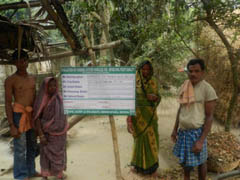
Shri Keshab Jena having the family of six members was deriving livelihood from the 0.70 ha area located in village Darabal, block Derabis (85 km from Bhubaneswar) in Kendrapara district of Odisha. The annual rainfall of the region is 1500 mm with maximum area under rice-fallow. However, Shri Keshab Jena tried to grow greengram, blackgram, jute and some vegetables like brinjal, bittergourd and tomato after the rice in order to get sufficient income to run his family. Besides these, he was also having a mango plant, one desi cow, two bullocks and four goats. The milk yield of cow was only
On-Farm Research (OFR) unit of Kendrapara district under AICRP on Integrated Farming Systems operating in Orissa University of Agriculture and Technology, Bhubaneswar identified Shri Jena during 2011 for conducting the research of “On-farm evaluation of farming system modules for improving profitability and livelihood of small and marginal farmers”. The farmer participatory research was conducted in the system perspective by identifying the module wise constraints and addressing of the same with low / no cost interventions in four modules namely crop, livestock, on-farm processing and value addition and optional In crop module, the constraints of low yield crop cultivars, imbalanced fertilizer application, high incidence of pest and higher incidence of weeds in jute was addressed through replacing the local variety of paddy with high yielding JKRH-401 and Hanseswari, bitter gourd with sathi and tomato with deepti, balanced fertilizer application to rice, application of rhizobium and paper mill sludge to pulses, IPM practices with low cost yellow trap and ash treatment to pulses & vegetables and quizalfop-ethyl weedicide application to jute.
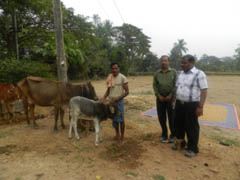


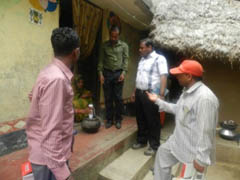
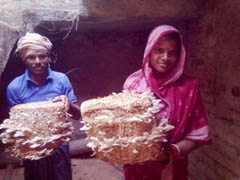
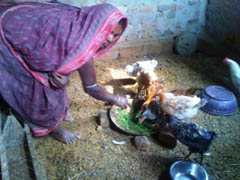
Similarly, in livestock module, constraints of low productive desi breed, inadequate and imbalanced feeding and no vaccination was addressed through promotion of Artificial Insemination (AI), integration of azolla for feed, use of albendazole for deworming and vaccination as per schedule. AI led to conception of cow and delivery of calf. In fisheries, the constraint was identified as seasonal derelict pond with short culture period which was addressed by stocking of quick growing species of paccu and silver carps. Apart from these, backyard poultry with improved breed of vanaraja, duckery and paddy straw oyster mushroom was integrated under optional module. In the on-farm processing and value addition module, the house women were trained for making quality pickle from mango and ghee from the excess milk for which low cost inputs like hand blender/milk frother were given.
The total cost of interventions in all the modules was only Rs 8700/year which contributed for additional income of Rs 25000/year. Within one year, the net return per rupee invested on interventions stands at 1.87. The household earns net income of Rs 33, 900/year which is 92 % higher than benchmark. Besides the higher income, the family meets the nutritional requirement by in-house production of quality products such as pulses, milk, egg, mushroom and fish. Nearby farmers are also evincing interest in adopting all the modules as these are of low cost in nature. The family gets additional employment of 43 man days due to the interventions made in farming systems perspective.
(Source: AICRP on IFS, PDFSR, Modipuram)








Like on Facebook
Subscribe on Youtube
Follow on X X
Like on instagram